A.
Leopard Men is an exceptionally dark
novel. There is nothing about it that isn't horrific, a sort of gotterdamerung.
There are probably more people killed in this novel than any other of Burroughs.
The threat of rape hangs heavy in the air. Old Timer/Burroughs is
going through major changes trying to burst his chrysalis.
Through it all runs the thread of religion;
and not just one religion but three religious systems. There is the
animistic religion of the Africans; a Semitic style religion of the Leopard
Men and an esoteric interpretation concealed in a gorgeous wealth of symbolism.
I will consider the last in Part B.
ERB's life was reaching a crisis, he had the
MGM contract to worry about, his ongoing war with the Reds and now his
sexual crisis that had been roiling beneath the surface for nearly fifty
years and was about to bubble over. Hence the novel is filled with
murky, rasty sexual symbolism welling up from the subconscious disguised
as religion.
For supposedly being an escapist writer without
either serious purpose or intellectual content when one parses out any
of his stories one is amazed that such serious purpose can be successfully
disguised as escapist. ERB shares this ability with the Homer of
the Iliad.
Since no one seems to have penetrated beyond the surface glitter from one
hundred years ago to this day I hope I will be pardoned for making the
attempt.
ERB's style of plotting is so diffuse that
it is very difficult to grasp the focal point which unites the various
strands of his story. In some incredible way he has half a dozen
stories running concurrently each with a different point and different
conclusion. One has to follow the bouncing ball. In Jewels
Of Opar the uniting theme is the story of what happens to the Jewels.
In Ant Men one has to follow the trajectory of Tarzan's locket.
In this one the key is Kali Bwana. ERB seems to favor this linking
approach.
Leopard Men has two main stories, that
of Old Timer and Kali Bwana and its subplots as well as the story of Tarzan
and the Leopard Men. As the story opens Tarzan is in Leopard
Men territory far from home. One wonders what Tarzan is doing in
this country. Naturally Burroughs presents his information on a need
to know basis. We apparently don't need to know until p. 108 when
after Tarzan regains his memory from yet another crushing blow to the skull
we are told:
During the long day Tarzan's mind was
occupied with many thoughts. He had recalled now why he had come
into this country, and he marveled at the coincidence of later events that
guided his footsteps along the very paths he had intended on trodding before
accident had robbed him of the memory of his purpose. He knew now
that depredations by Leopard Men from a far country had caused him to set
forth upon a lonely reconnaissance with only the thought of locating their
more or less fabled stronghold and temple. That he should be successful
in both finding these and reducing one of them was gratifying in the extreme,
and he felt thankful now for the accident that had been responsible for
the results.
Thus as Tarzan regains his memory he discovers
that he had destroyed the stronghold of the Leopard Men. In rescuing
Old Timer and Kali Bwana he will also destroy the temple. A good
day's work.
With this story of his quest and triumph we
have a second examination of religion, a continuation of the exploration
begun in Tarzan Triumphant of the first half of 1931. The
reference to the accident that led to these results may be a reference
to the incident in Toronto in 1899. He and Emma both believed it
resulted in his writing career. Perhaps the signing of the contract
with MGM in April may also be inferred to as an 'accident.' Much
research is needed into his relations with MGM and these critical five
or six years of his career. Certainly by late July and August as
he was writing this story the realization of the meaning of the contract
he had signed was seeping in. By 1933's Tarzan And The Lion Man
he was fully aware. Subsequent to that discovery he formed an ill
advised alliance with his wife's ex, Asthon Dearholt, to film the 'real'
Tarzan. That in its place. For now his troubles were not on
the laps of the gods but on the laps of Irving Thalberg and Louis B. Mayer.
If negotiations began on April 4 and were completed
and signed on April 15 that means that neither ERB nor Rothmund read the
contract very thoughtfully. They certainly didn't take it to an attorney.
As in Lion Man he complains of the duplicity of men; he was finding
out what the terms of the contract meant. Perhaps in Leopard Men
he was getting glimmers of the shape of things to come.
As in Triumphant the two Midian peoples
obviously represent Jews and non-Jews, us meaning the Jews and them meaning
the rest of the world as per Rabbi Schneerson's division of mankind into
two different species, us and them. I will treat the Utengans as
them and the Leopard Men as us which is what ERB intended. The connection
of the Leopard Men to the Jews can be established by two references connecting
them to Hollywood:
Gato Mgungu
had never had the advantages of civilzation. (He had never been to
Hollywood.)
And on p. 66:
Perhaps his
reasons might be obvious to a Hollywood publicity agent.
I'm sure you moved out of the way so ERB's sarcasm
didn't splash on you.
His letting his contempt for Hollywood which
he had suppressed since 1922's Girl From Hollwyood show now
and his associating it with Thalberg, Mayer and MGM is evidence of frustration.
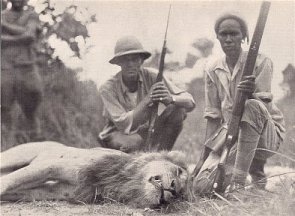
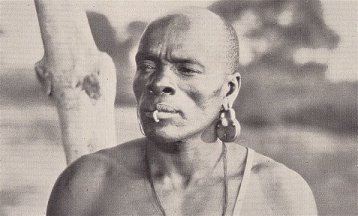
When Van Dyke returned from Africa he brought
his gun bearer Riano and the actor who played Renchoro, Mutia, with him
for finishing scenes. It seems likely that ERB would have sought
an introduction to these two 'real' Africans. One can only imagine
what these two bush Negroes who had never conceived a world larger than
their own jungle thought of the twentieth century in the bizarre world
of Tinseltown. How did these minds that had probably never seen a
wheel prior to Van Dyke's expedition react to what must have seemed to
them a parallel universe. Place yourself in their position and your
head will spin. One wonders, even, having lived naked all their lives,
how they reacted to dressing every morning and wearing Western style clothes
all day. Did Tarzan's experience in the shower in Tarzan
Goes To New York have anything to do with these two noble savages
introduction to civilization? Possibly the reference to Gato Mgungu's
never having been to Hollywood may refer to ERB's observation of Riano
and Mutia.
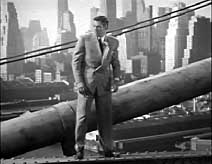
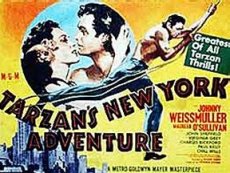
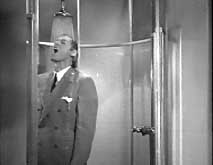
There is some wonderful stuff going on here.
If Hollywood wasn't centered on pornography and its concomitant degraded
sadistic violence with a little imagination they might be able to put together
a good movie or two from this material. Do I digress? Ah, then
I digress. But back to the story.
As with 'them' elsewhere the Utengans are good men
going about their business while the 'us' or Leopard Men are a destructive
force in society. ERB has displaced the two relgious systems to Africa
where he presents two rather derogatory versions of Africans. He
is uncharacteristically derogatory of the Blacks. Perhaps his concentration
on so portraying the Africans was the result of his rage at the Scottsboro
Boys. On p. 92 he says of the orgy of the Leopard Men:
He saw that religious and alcholoic drunkenness
were rapidly robbing them of what few brains and little self-control Nature
had vouchsafed them, and he trembled to think of what excesses they might
commit when they passed beyond even the restraint of their leaders; nor
did the fact that the chiefs, the priests, and the priestesses were becoming
as drunk as their followers tend but to aggravate his fears.
ERB in his evolutionary mode had always considered
the African to be less evolved but this is a subjective observation not
a objective one. The bold statement 'what few brains and little self
control' may have been his personal opinion but doesn't look well in print.
I think it probable that his anger over the Scottsboro affair caused him
to lose his customary discretion. In doing so he would be giving
fuel to his detractors which it is never wise to do. When it is said
that this is his worst novel I believe it is because of passages like this.
One wonders why the delay in the book issuance
until 1936 and why then. Among other reasons one may have been that
by 1936 the Communist campaign to embarrass the United States over the
alleged injustice to the Boys was reaching a peak. Perhaps one intention
of ERB was to show by the African example that Negroes were by nature of
feeble intelligence and little self control. If so, risky business
for ERB. However throughout the novel a series of Black men is slathering
at the mouth to rape Kali Bwana, recalling the train incident of the Scottsboro
Boys.
ERB also introduces the concept of religious
drunkenness which can exist quite independently of alcohol. Indeed
there are many who can maintain a perpetual religious high. The bizarre
statements of Rabbis Schneerson and Ginsburgh can be attributed to religious
drunkenness. In their religious enthusiasm they have certainly set
aside reason. So once again a greater depth of thought is revealed
than is usually attributed to Burroughs. Just two words-- religious
drunkenness-- reveal a fair amount of thought and study.
During the great storm the Leopard Men catalyze
the story by the ritual killing of a Utengan named Nyamwegi. While
the storm is raging Tarzan who has taken refuge beside the bole of a great
tree has it blown down with one of its great lower branches landing on
his head. One admires the tensile strength of his skull. Apparently
a big eighteen wheeler laden with thirty tons could roll over his head,
the only possible result being a temporary loss of memory. Burroughs
is going through another period of great stress so Tarzan does wake up
in a world he doesn't recognize.
A Utengan passing by notices the Big Bwana
pinned to the ground on his back by the tree, not on his head, thank goodness,
but somewhere over his body. No broken bones, luck is still with
the Big Guy. As he had his bow and quiver slung over his back as
he was pinned one has to think he's in a fair amount of discomfort.
Orando, the Utengan is about to eliminate Tarzan from the story, which
would have left a gap, when he has the suspicion that this might be his
Muzimo. Orando had just been praying to his Muzimo to aid him in
his hunting, perhaps Muzimo is the hunter after whom this chapter is named,
and lo, he now appears. ERB goes to some lengths to demonstrate the
superstitious nature of African religion. He really seems to be making
an effort to belittle the African in this novel. Orando's suspicion
is confirmed a few moments later when by a series of coincidences Tarzan
seems to answer when Orando calls him Muzimo. As Tarzan has no memory
of other identity he assumes the role of Orando's Muzimo. This is
really quite well done.
A muzimo is a sort of guardian angel, a spirit
of an ancestor who looks after you. Tarzan really fills the role
performing natural -- for him -- feats that Orando believes are supernatural.
Tarzan, or Muzimo, directs the entire successful attack on the Leopard
Men's stronghold.
Tarzan's role of Muzimo is a story within the
story within the story which is based on Trader Horn. If one
keeps diving we might even find another story within the story. The
story of Tarzan as Muzimo is quite independent of the story of Old Timer,
the Kid and Kali Bwana. As we will learn when his role of Muzimo
ends, Tarzan's reason for coming to Utenga was to search out the Leopard
Men. The fact that Old Timer, Kali Bwana and the Kid are there is
mere coincidence. Their stories only become meshed at the Leopard
Men's temple which inadvertantly brings all together. Even then,
after regaining his memory, as Burroughs explains, they are of little interest
to Tarzan. The connection is only racial which is a very weak.
Really the devil is in the details. A whole lot of devils.
ERB has established the conflict between the
superstition based animistic religion of the majority culture and the horrific
satanic religion of his minority culture. He may be 'fictionizing'
here the real life situation between the Western dominant culture of Christianity,
which he would still believe superstitious, and its recessive Jewish sub-culture.
I'm not clear how closely he intends the comparison. At first sight
Orando's mistaking Tarzan for his Muzimo or guardian angel seems ridiculous
yet even at this moment seventy percent of Americans believe in guardian
angels. The figure would probably have been a few percentage points
higher in his day.
Also, the Scopes Monkey Trial in Dayton, Tennessee
was as recent as 1925-26, so the conflict between science and superstition
in the US was by no means a settled matter. The analogy between African
and American culture may be sardonic.
Just as the Utengans probably represent the
Christian culture of the West so the Leopard Men may represent the minority
Jewish Culture. Just as the Leopard Men had adherents functioning
secretly within the majority culture directing affairs so did the Jewish
Culture in the West. Just as the Leopard Men had organizational representatives
distributed amongst all the tribes across Africa functioning toward a common
goal so Jewish Culture was represented in every culture of the Western
world. Just as the witch doctor Sobito manipulated the affairs of
the Utengans from within for the benefit of the Leopard Men so the Jewish
Culture through the ADL/AJC manipulated Western Culture for its own benefit.
In the twenties and thirties the International
Jewish Conspiracy phase of Jewish manipulation was the prevailing fear.
The struggle to deny the Protocols Of The Elders Of Zion had not yet been
effected although well along.
It seems clear to me that Burroughs always
has unterior motives in his novels. He is not simply telling a story
for entertainment. Burroughs must have been puzzled by the attitude
of the majority culture. While Science was daily discrediting the
supernatural yet the majority of the majority clung to, not so much outmoded
religous beliefs, as a religious cast of mind. The belief in Christianity
was being steadily eroded as based on superstition yet rather than abandoning
religion Americans frantically tried to incorporate science into religion.
Thus one has the strong religious quality of Liberalism that encourages
the defamation of Christianity yet pursues a religious agenda based on
wishful thinking.
It is very strange, more than passing strange,
that while Westerners reject Christianity they have reverence for Judaism
and Moslemism. While Christianity represents an anterior stage in
the psychological development of mankind, the former two are even more
primitive, magical and superstitious. One has to laugh out loud at
Rabbi Schneerson's attempt to incorporate genetics into his religious system
while the Moslem clerics are unfathomable by both Scientific and Liberal
ideas and notions. Yet Liberals attack Christianity while endorsing
Judaism and Moslemism.
Burroughs pits his alter-ego Tarzan and the
majority against the minority religion launching an all out attack.
Tarzan, whose memory is gone, accepts his role as Orando's Muzimo.
Curiously Buurroughs describes Tarzan's tan as so deep that he is the same
skin color as Orando yet retains his status as 'white.' Possibly
Orando was better able to accept Tarzan as Muzimo because of this.
Tarzan becomes Muzimo being in fact Orando's guardian angel until he regains
his memory at which point he becomes again his own man pursuing his own
interests. While he is Orando's Muzimo he is a spectacular guardian
angel directing Orando's quarrel with the Leopard Men to a successful conclusion
which as we are told his original intention was the suppression of the
Leopard Men.
Tarzan foils the Leopard Men's advantage in
Utenga by exposing the witch doctor Sobito as a Leopard Man as well as
the spy Lupingu. He is instrumental in the deaths of both.
His task is made easier because Orando believes implicitly in whatever
his Muzimo says. Thus, while there is a natural explanation for what
happens the results appear as genuinely supernatural to Orando and his
tribesmen.
This is all handled very cleverly by Burroughs
as he lets the reader see what is happening as he also shows Orando's superstitious
interpretation. It's actually pretty funny.
By following Tarzan/Muzimo's advice the Utengans
catch the Leopard Men coming back from a ritual orgy while hung over and
either kill or scatter them, men, women and children. There was no
one left alive in their village. Thus the majority expel their troublesome
minority or sub-culture from their midst, perhaps as ERB wished the majority
culture of the United States might do with its troublesome minority culture.
He may have used Africa as a metaphor for the United States. In any
event Leopard Men seems to be a continuation of Triumphant
on the religious level while being perhaps the most detailed examination
of religion that ERB did. But you can see why his Liberal detractors
would call this his worst novel.
At the time of writing Leopard Men the
most recent issued story was Tarzan The Invincible. Tarzan
Triumphant had been written and probably submitted to Blue Book but
it wouldn't be published until 1932-33 while the book edition was published
in 1932 so there couldn't as yet have been a reaction to his portrayal
of the two Midian cultures and Abraham son of Abraham and his followers
of Paul.
Perhaps ERB found his religious portrayal of
Triumphant
too clumsy so he refined it in Leopard Men.
B.
Riders On The Storm
If you don't enter as an initiate you won't get the
story. The symbolism in this story is so strong and complete that
it should be a standard psychological textbook. Burroughs writes
as though he had just come from a course in esoteric symbolism. He
continues this throughout the story too. I don't know if I can do
this justice but I will try.
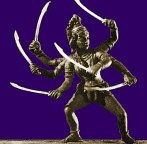
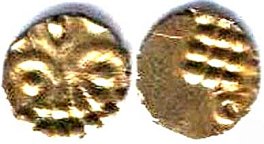
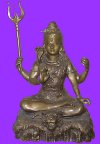
Burroughs has entered the defining crisis of his life, thus the
novel is full of symbols of life, death and regeneration. ERB feels
that he is being born again, the butterfly emerging from the cocoon.
The very name of Kali Bwana is the primary symbol. Kali is the Hindu
symbol life, death and regeneration. Her image is as dark as this
story. This story, as it were, emerges from the very bowels of the
pit, the viscera of frustrated desires and hopes of their fullfillment.
Very frightening actually. I can see how on one level so many people
would consider it ERB's worst. They can't understand it. The
story deals with primal needs and desires that would drive a man insane.
Indeed, Kali Bwana considers Old Timer insane. He himself says that
maybe he is crazy. He makes psychotic statements and is on the verge
of criminal sexual behavior throughout the book until the very end when
he is reformed. This is an extremely violent but regenerative story.
Sort of like Walt Disney on steroids.
Kali Bwana is the joy of man's desiring.
A platinum blonde, her beauty apparently disintegraates all men's self
control as she inspires dreams of rape rather than courting. Old
Timer himself has rape in mind all through the book. No man or animal
in the story ever thinks of honoring her femininity; their only thoughts
are to violate her beauty to gratify their illicit lustful desires.
This is serious stuff.
As Kali she is the mate of Shiva. While
Shiva is usually depicted as a handsome young man serenely playing a flute
Burroughs represents him as the Leopard god of the cannibalistic, criminal
nature cult. Thus, Kali Bwana is captured by the Leopard Men to serve
as high priestess to their Leopard god thus forming an Anima and Animus.
Burroughs does an excellent job of presenting both the barbaric splendor
and degradation of the cult or religion.
The story is set by the book's opening.
One of attempted rape and violence set amidst a terrific storm. Indeed,
it was a dark and stormy night. Burroughs immediately sets the scene
with a description of the impending storm. One feels this is not
an ordinary storm but one fraught with significance and meaning. It is
a life changing storm.
 The Penguin Dictionary of Symbols which I use here for reference is readily
available. It discusses storms on p. 941;
The Penguin Dictionary of Symbols which I use here for reference is readily
available. It discusses storms on p. 941;
The storm is
a symbol of a theophany, the manifestation of the awesome and mighty power
of God. While it may herald a revelation, it can also be a
manifestation of divine anger and sometimes of punishment.
Creative activity is
also unleashed in a storm. In a cosmic upheaval beyond the power
of words, life itself was born.
And then as Burroughs refers to the storm as a
hurricane. The Penguin dictionary says this, p. 533:
Hurricanes are
almost Dionysiac orgies of cosmic energy. they symbolize the ending
of one period of time and the beginning of another as tireless Earth repairs
the damage.
So now we have the figure of the eternal female,
the symbol of birth, death and regeneration coupled with storm and hurricane
symbols also denoting major changes. The impact is increased by the whole
being expressed in a half dozen pages, very compressed.
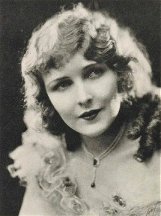 It should be noted that Florence Gilbert represents Kali Bwana and Old
Timer is obviously ERB. The changes are happening to him. Florence/Kali
is both repelled and passive. Perhaps because of the ripening romance
between his wife and ERB Ashton Dearholt had taken her on a motor tour
removing her brom the scene probably hoping separation would end the affair.
According to the ERBzine
30s Bio Timeline the Dearholts returned to LA in May just as ERB was
completing
Triumphant
and before he began Leopard Men.
If he had been fighting his feelings for Florence her return was obviously
more than he could deal with hence this terrific storm and the overwhelming
number of female symbols in the book.
It should be noted that Florence Gilbert represents Kali Bwana and Old
Timer is obviously ERB. The changes are happening to him. Florence/Kali
is both repelled and passive. Perhaps because of the ripening romance
between his wife and ERB Ashton Dearholt had taken her on a motor tour
removing her brom the scene probably hoping separation would end the affair.
According to the ERBzine
30s Bio Timeline the Dearholts returned to LA in May just as ERB was
completing
Triumphant
and before he began Leopard Men.
If he had been fighting his feelings for Florence her return was obviously
more than he could deal with hence this terrific storm and the overwhelming
number of female symbols in the book.
As this terrific storm burst in the opening
pages Kali Bwana's Black head man steals into ther tent with the intention
of raping her. She puts a bullet through his arm driving him away.
ERB here introduces the theme of rape which recurs many times throughout
the book.
At the same time as the rape attempt the Leopard
Men corner Nyamwegi, a Utengan reurning from a date with his girl friend.
Amidst the multiple bolts of lightning which illuminate the entire sky
and tremendous crashes of thunder the Leopard Men gruesomely and bloodily
murder him removing body parts.
ERB accentuates the ferocity of the storm and
hurricane by saying that the lightning bolts were numerous and continuous,
filling the entire sky. The Penguin dictionary, p.606:
Lightning sympolizes
the spark of life and powers of fertilization. It is fire from Heaven,
vastly powerful and terrifyingly swift, which may be either life giving
or death dealing.
And on p.607:
As the weapon
of Zeus, forged in FIRE (symbol of the intellect) by the Cyclops, lightning
is' the symbol of intentive and spiritual enlightenment' or the sudden
flash of inspiration. However, while it enlightens and stirs
the spirit, lightning strikes down 'the drive of unsatisfied and uncontrolled
desire...'
So after this storm all will be changed, there
will be a new Heaven and new Earth. Kali Bwana has averted personal
disaster while Nyamwegi has met his end. Nearby in another part of
the forest Tarzan and Nkima crouch beside a forest giant to wait out the
storm. Here the hurricane topples the tree unprooting it. Tarzan
tosses Nkima out of the way but is himself struck by a branch, one assumes
one of the big ones of the lower terrace. Once again the Big Fella
is give a case of amnesia so that he is not aware of his racial affinity
to the Whites aligning himself with the Blacks.
In another part of the forest, not too far
away, Old Timer and the Kid are discussing their fortunes apparently unaware
of this massive storm. As Old Timer sets out on the trail of ivory
on the morrow he hears a shot which leads him to Kali Bwana. All
the elements of the New Day are in place.
The action takes place not only in the forest
but in the Ituri
Rain Forest, the forest of forests. In Western symbolism the
forest is where the lost man wanders in search of his redemption.
One has to find one's way out of the forest for personal redemption.
Thus Old Timer and Kali lose their way wandering around in the forest hopelessly
lost. At one point Old Timer can't see the constellations to navigate
at night. At another the forest is so dark he can't see the sun to
navigate by it. Both he and Kali have to be rescued by Tarzan after
he regains his memory.
As David Adams has pointed out Sheeta is always
associated with the Anima or female. Usually Sheeta is described
as a panther but in this novel Sheeta is the Leopard. The smell of
Sheeta is overwhelming throughout this novel. In this case I think
we may be sure that Sheeta represents the fear of the feminine. Tarzan
and Nkima are inseparable in this novel. Throughout the entire novel
Nkima complains about the smell of Sheeta who wishes to devour him.
So Burroughs is afraid of what is happening to him in regards to Florence.
When Tarzan recovers consciousness after the battle with the Leopard Men
the first thing he does is call for Nkima. The little monkey in his
place on Tarzan's shoulder reminds one of the Egyptian Ka or double.
Tarzan the fearless and Nkima the fearful. Burroughs as a child confronted
by John the Bully.
 As an aspect of Tarzan's-- and Burroughs'-- character Nkima probably represents
his more chicken livered side. There is no record of Tarzan ever
having known fear, he doesn't even know the meaning of the word, but Burroughs
did hence Nkima who knows nothing but fear. Neither Tarzan nor Burroughs
have ever been what one would call ladies men hence if not fear of the
feminine at least an apprehension of it. As Burroughs is now reaching
a major crisis of his life having now to choose either Emma or Florence
it is not to be wondered that the forest reeks of Sheeta. Indeed,
the Leopard Men themselves are symbols of the feminine and they intend
to sacrifice Old Timer. Thus one has the leopard as Leopard God and
Kali Bwana as his Leopard Goddess.
As an aspect of Tarzan's-- and Burroughs'-- character Nkima probably represents
his more chicken livered side. There is no record of Tarzan ever
having known fear, he doesn't even know the meaning of the word, but Burroughs
did hence Nkima who knows nothing but fear. Neither Tarzan nor Burroughs
have ever been what one would call ladies men hence if not fear of the
feminine at least an apprehension of it. As Burroughs is now reaching
a major crisis of his life having now to choose either Emma or Florence
it is not to be wondered that the forest reeks of Sheeta. Indeed,
the Leopard Men themselves are symbols of the feminine and they intend
to sacrifice Old Timer. Thus one has the leopard as Leopard God and
Kali Bwana as his Leopard Goddess.
The tremendous rainfall, itself a symbol of
regeneration and fertility from the male sky god would create a steaming
swamplike atmosphere as it fell on Mother Earth while the temple of the
Leopard God itself was in a crocodile infested swamp.
First the Crocodile as symbol. Penguin
p. 244:
The crocodile
which carries the Earth on its back, is a divinity of darkness and the
Moon, whose greed is like that of the NIGHT which each evening devours
the Sun. From civilization to civilization and from age to age the
crocodile exhibits a high proportion of the countless links in that basic
symbolic chain which belongs to the controlling forces of death and rebirth.
The crocodile may be a formidable figure, but this is because, like all
expressions of the power of fate, what he displays is inevitable-- darkness
falling so that daylight may return, death striking so that life may be
reborn.
In other words you can't make an omelet without
breaking a few eggs. Poor Emma. Obviously for ERB he is killing
his past so that his future may be born.
The temple is in the center of a swamp so deep
within the forest that the sun never shines on it. The swamp is the
quintessential female symbol. It is in the Lernean swamp that Heracles
has to do battle with the Hydra. Hydra= the water of the feminine
and the irrational. Each time Heracles cuts off one of the seven
heads another grows in its place until he cauterizes each severance with
fire, that is the power of the male intellect.
Thus, one has crocodiles, leopards, water,
swamp, the river and Stygian darkness. If you can't rise above the
fear of the feminine, you will be swamped, drowned in her waters.
The only entrance and exit is this slow moving river obscured by the forest.
This river of mystery and death. The River is the last of the great
symbols we will consider. Penguin p. 808:
The symbolism
of rivers and running water is simultaneously that of the 'universal potentiality'
and that of the 'fluidity of forms' (Schuan) of fertility, death and renewal.
The stream is that of life and death. It may be regarded as flowing
down into the sea; as a current against which one swims; or as something
to be crossed from one bank to another. Flowing into the sea is the
gathering of the waters, the return to an undifferentiated state, attaining
Nirvana. Swimming against the stream is clearly returning to the
divine source, the First Cause. Crossing the river is overcoming
an obstacle separating two realms or conditions, the phenomenal world and
the unconditioned state, the world of the senses and the state of non-attachment.
Then this from Burroughs p. 191:
The sun was
sinking behind the western forest, its light playing on the surging current
of the great river that rolled past the village of Bobolo. A man
and a woman stood looking out across the water that was plunging westward
in its long journey to the sea down to the trading posts and the towns
and the ships, which are the frail links that connect the dark forest with
civilization
If one looks at this novel from an esoteric symbolic
point of view the symbols tell their own story.
As Old Timer says Kali mean Woman. At the beginning
we have Woman and the Shaggy Man.
I haven't given the symbolism of the Shaggy
Man yet so using the Penguin Dictionary of Symbols again under the heading
Rags And Tatters, p. 782:
(Rags And Tatters)
are the symbol of anxiety and lesions of the psyche as well as that naterial
poverty which, in folktale, is sometimes adopted as a disguise by princes,
princesses and wizards. It denotes simultaneously poverty and anxiety
or cloaks inner riches under an appearance of wretchedness, thus displaying
the superiority of the inner over the outer self.
Thus, Kali-- the Woman-- the symbol of death,
birth and regeneration and The Shaggy Man or the Frog Prince, the Hero
in disguise waiting to be regenerated by the kiss of the ultimate Woman.
A classic fairy tale, actually, with a tip of the hat to David Adams for
insisting on the fairy tale connection
The Man, the Woman, the Storm with a tremendous
display of Lightning, Thunder, Wind and Rain completely transforming both
the physical and psychic landscapes bringing the Man and the Woman together.
The Woman is then captured by the repressed
sexual desire of the Leopard Men who wish to install her as their Goddess.
The Woman or Kali is stripped Naked and then adorned with various attributes
of the Leopard cult.
As in various myths, fairytale and folk lore
stories the Man and the Woman (the Anima and Animus) have been separated
by Fate and must fight through all obstacles to be reunited.
Kali (Woman) is led through the teeming, steaming
forest with a rope around her neck to the big river down which she is canoed
to a smaller stream 'the silent river of mystery and death' in the darkest,
swampiest, most crocodile infested part of the darkest of dark forests.
Abandoning all other concerns the Shaggy Man
pursues Kali to the den of the Leopard Men where he is taken prisoner,
then taken down the silent river (the Styx?) to be sacrificed. By
a miracle the two escape only to be separated again while the Shaggy Man
is taken back to the temple of the Leopard Men. Kali, Woman, is captured
by a Black chief to serve his sexual needs. Rape again. White=Light,
Black=Darkness. Thus the ever present threat of rape seems to be
about to be fulfulled. But no, the elder wife of the Black chief
objects to the White Woman. Out of th pot into the fire. The
Woman is left with Pygmies who are even more vile than the Blacks.
But now a Deus ex-machina, Tarzan, has released
the Shaggy Man. Hot in pursuit he follows Woman to the Pygmy camp.
He madly attempts rescue which is successful once again becasue of the
Deus ex machina.
It's not over yet folks. ERB can make
any 192 page story go on for a near eternity. Together again Kali
and the Shaggy Man are once more torn assunder when the the Deus ex machina
sends an ape who captures the Shaggy Man. Makes you breathless doesn't
it? Deus once again reunites the Woman and Shaggy Man. Now,
if you will notice the Shaggy Man forces a kiss on Woman. His act
of violence shames him so that he finds redemption in his remorse.
Thus the kiss of Woman has returned the Frog Prince to his rightful form.
As the story ends the two are about to leave
the dark forest for the light of civilization down river.
Thus one has the classic myths-- Psyche and
Eros, Perseus and Andromeda and many others, numerous fairy tales-- Cinderella,
one which ERB has used before, and much folk-lore. It is done very
well, too, if you're following the bouncing ball.
It is noteworthy that the work of another great
author is misunderstood too. I refer to the ancient poet Homer.
While Homer's reputation is very great no one understands the Iliad.
The adventures of the Gods and Goddesses are beyond the comprehension of
classical scholars. Thus they prefer the Odyssey which is
written in a more comprehensible if pedestrian style. If I remember
correctly the Five Foot Shelf excludes the Iliad while containing the Odyssey.
While both are attributed to Homer they must have been written by two different
mind sets. The psychology of each is too different to have been written
by one mind. Besides the Iliad concerns the middle part of
the Seige of Troy while the Odyssey skips all the way to the story
of only of of the Returns.
There are similarities in the way Burroughs
and Homer tell their stories but to avoid argument Homer is incomparably
the greater.
Nevertheless Burroughs has masterfully used
a set of symbols to supply a very rich subtext to his story and he has
done it intentionally. He does know whereof he speaks. I don't
think there is any doubt that he has studied Esoterica. Probably
the topic was of life long interest both in the old kook capital of Chicago
and new kook capital of Los Angeles. (Kookie, Kookie, lend me your
comb.)
There was a lot of esoterica going on in LA.
The Golden Dawn of Aleister Crowley was out in the desert at Barstow, Manly
Hall was advising the movies on Esoteric matters, the Vedantists were established
and the Theosophists had a terrific college in LA.,
Anybody who thinks ERB wasn't interested in
such things doesn't know how to spell Edgar Rice Burroughs.
While ERB wouldn't touch a religious theme
unless 'highly fictionized' he managed to highly fictionize all manner
of religion in this great novel of his mature period. He was working
at break neck pace, too.
Love this stuff.
On to Part IV which will deal with the cast
of characters. Inevitably there's a certain amount of repitition
but I try to cast the stuff in different highlights, crosslights and aspects.
This stuff deserves a thorough examination.

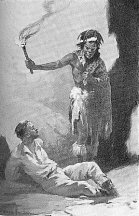
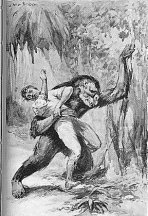








 The Penguin Dictionary of Symbols which I use here for reference is readily
available. It discusses storms on p. 941;
The Penguin Dictionary of Symbols which I use here for reference is readily
available. It discusses storms on p. 941;
 It should be noted that Florence Gilbert represents Kali Bwana and Old
Timer is obviously ERB. The changes are happening to him. Florence/Kali
is both repelled and passive. Perhaps because of the ripening romance
between his wife and ERB Ashton Dearholt had taken her on a motor tour
removing her brom the scene probably hoping separation would end the affair.
According to the
It should be noted that Florence Gilbert represents Kali Bwana and Old
Timer is obviously ERB. The changes are happening to him. Florence/Kali
is both repelled and passive. Perhaps because of the ripening romance
between his wife and ERB Ashton Dearholt had taken her on a motor tour
removing her brom the scene probably hoping separation would end the affair.
According to the  As an aspect of Tarzan's-- and Burroughs'-- character Nkima probably represents
his more chicken livered side. There is no record of Tarzan ever
having known fear, he doesn't even know the meaning of the word, but Burroughs
did hence Nkima who knows nothing but fear. Neither Tarzan nor Burroughs
have ever been what one would call ladies men hence if not fear of the
feminine at least an apprehension of it. As Burroughs is now reaching
a major crisis of his life having now to choose either Emma or Florence
it is not to be wondered that the forest reeks of Sheeta. Indeed,
the Leopard Men themselves are symbols of the feminine and they intend
to sacrifice Old Timer. Thus one has the leopard as Leopard God and
Kali Bwana as his Leopard Goddess.
As an aspect of Tarzan's-- and Burroughs'-- character Nkima probably represents
his more chicken livered side. There is no record of Tarzan ever
having known fear, he doesn't even know the meaning of the word, but Burroughs
did hence Nkima who knows nothing but fear. Neither Tarzan nor Burroughs
have ever been what one would call ladies men hence if not fear of the
feminine at least an apprehension of it. As Burroughs is now reaching
a major crisis of his life having now to choose either Emma or Florence
it is not to be wondered that the forest reeks of Sheeta. Indeed,
the Leopard Men themselves are symbols of the feminine and they intend
to sacrifice Old Timer. Thus one has the leopard as Leopard God and
Kali Bwana as his Leopard Goddess.
